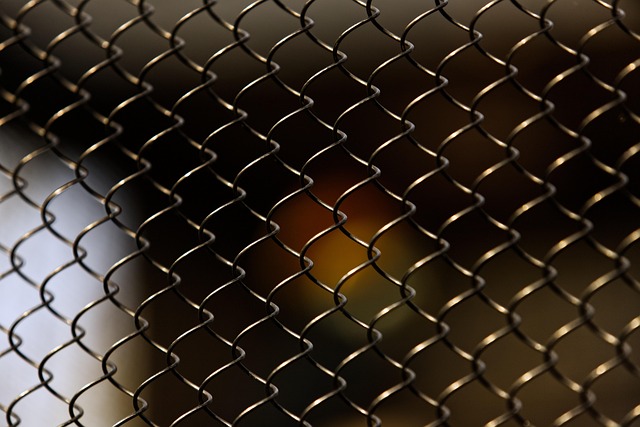DIY Fence Installation Tips for New Bedford Homeowners
Are you a New Bedford, Massachusetts homeowner looking to enhance your outdoor space? Installing a fence can transform your yard into a secure, aesthetically pleasing oasis. This comprehensive guide offers invaluable DIY tips tailored for your region. From understanding local fencing options and meticulous planning to preparing the ground, installing posts, and maintaining your new fence, we cover every step. By following these expert advice, you’ll have a sturdy, stylish fence that increases your home’s value and provides years of enjoyment.
- Understanding Your Fence Options for New Bedford Yards
- Measuring and Planning Your Fence Layout Effectively
- Preparing the Ground: A Step-by-Step Guide
- Choosing and Installing the Right Fence Posts
- Attaching Fences to Posts: Ensuring Sturdy Connections
- Final Touches: Painting and Maintenance Tips
Understanding Your Fence Options for New Bedford Yards
When it comes to fencing your New Bedford, Massachusetts yard, there are numerous options to consider. The first step is understanding the types of fences suitable for your specific needs and landscape. Wood, vinyl, chain-link, and iron are some popular choices in the area. Each material offers unique aesthetics and benefits; wood adds a natural charm, while vinyl requires less maintenance. Chain-link is robust and secure, ideal for safety concerns, and iron provides an elegant, classic look.
Factors like budget, climate tolerance, and desired level of privacy play a significant role in your decision. Consider the surrounding environment and nearby properties to ensure your fence aligns with local regulations and maintains harmonious aesthetics. Consulting with local experts or professionals can offer valuable insights into the best options for your New Bedford yard.
Measuring and Planning Your Fence Layout Effectively
Measuring your fence layout is a crucial first step in any DIY installation project. Start by identifying the perimeter of your desired fence area, taking note of existing structures, trees, or other obstacles. Use measuring tape to mark out the exact dimensions, ensuring you measure both length and height requirements for your chosen fence style. This precise planning will not only help you purchase the right amount of materials but also guide the entire installation process.
When planning, consider the function and aesthetic you want from your fence. Different layouts can accommodate various gate or opening placements, and understanding your property’s unique topography is key to an effective design. Create a rough sketch, marking out gates, posts, and any additional features like corner treatments or lattice work. This visual representation will make it easier to visualize the final product and ensure a well-thought-out fence installation.
Preparing the Ground: A Step-by-Step Guide
Preparing the ground is a crucial step in DIY fence installation, setting the foundation for your new barrier. Start by clearing the area where your fence will stand. Remove any debris, plants, or trees that might interfere with the fence’s alignment. Then, using a garden hoe or mechanical digger, thoroughly loosen the soil along the intended fence line, ensuring it’s free from roots and rocks.
Next, mark out the fence’s perimeter using stakes and string for guidance. Use a shovel to dig holes at each corner of your fence line, making them deep enough to accommodate the bottom rail. These holes should be spaced evenly and aligned with the desired fence layout. Once dug, level the ground within each hole to ensure stability.
Choosing and Installing the Right Fence Posts
When selecting fence posts for your New Bedford, Massachusetts property, consider factors like material, height, and depth. Wooden posts are popular for their aesthetic appeal and affordability, but they require regular maintenance. Metal posts offer durability and low-maintenance benefits but might be more expensive. Ensure the posts you choose align with local building codes.
Before installing, plan the layout of your fence carefully. Dig holes for the posts, making sure they’re deep enough to provide stability against shifting soil. Place the posts in the holes, backfill with concrete, and allow it to set completely. Proper post-installation is crucial for maintaining the overall integrity and longevity of your fence.
Attaching Fences to Posts: Ensuring Sturdy Connections
When installing a fence, one of the critical aspects is ensuring that each post is securely attached to the ground and properly connected to the fence panels. This involves digging deep enough holes for the posts and using concrete to set them in place. The depth of the hole should be at least a third of the post’s height to provide stability against shifting soil. After setting the posts, use high-quality hardware, such as galvanized or stainless steel brackets and screws, to fasten the fence panels. This dual method of attachment—concrete for support and hardware for security—guarantees that your fence will withstand wind, pets, and other potential disturbances.
Regular maintenance plays a significant role in keeping these connections sturdy. Inspect your fence posts and hardware periodically, tightening any loose screws or replacing worn-out components. Treating wooden posts with preservative can extend their lifespan and protect them from rot, further enhancing the overall durability of your fence.
Final Touches: Painting and Maintenance Tips
Once your fence is installed, it’s time to add the final touches. A fresh coat of paint can enhance the overall look and protect your fence from the elements. Choose a color that complements your home’s exterior and consider the type of finish – semi-gloss or latex paint are popular choices for fences as they withstand sunlight and rain. Regular maintenance is key to keeping your New Bedford, Massachusetts fence looking its best. This includes cleaning the fence regularly with a pressure washer or soft brush to remove dirt and debris, and inspecting it for any signs of damage. Minor repairs, such as replacing split boards or securing loose posts, should be addressed promptly to prevent further issues.
